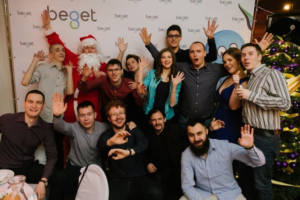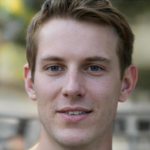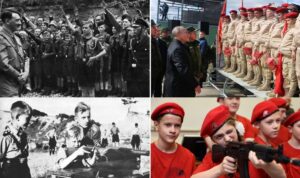Crimean «Center of Journalist Investigations» presents its special project «Putin’s schutzmanns». It is about illegal para-military units created on the eve of the Russian occupation of Crimea. They served as human shield and propagandist «screen» of the Russian hybrid military operation. Putin and his troops hid behind members of «self-defense» of Crimea and Sevastopol. They performed dirtiest tasks and keep playing the role of auxiliary police of Russian occupants now.
During the Second World War Nazi regime recruited residents of occupied territories and created its para-military units in each seized country. In Ukraine, they were called Schutzmannschaft. Russian ideologists and authors of the Crimean annexation have apparenty used this Nazi experience.
Special project includes three series of «Putin’s schutzmanns» and a number of investigations of separate units and persons who played significant role during Russian occupation of Crimea.
The first part of trilogy is about illegal military units of Sevastopol. They were set up in January 2014. When Russian troops seized Sevastopol on February 23, 2014, these units were already well trained, armed, subordinated to single headquarters and coordinated by Russian intelligence services and commanders of the Black Sea Fleet of the Russian Federation.
The second part is about «self-defense of Crimea». It has been formally directed by Mykhailo Sheremet and Sergii Aksyonov but it has been in fact subordinated to commanders of Russian military and intelligence services, including Igor Girkin (Strelkov). Underpinned by «Head of Crimea» Aksyonov and budgetary resources, «self-defense of Crimea» still functions today.
The third part is about Russian Cossack units transferred from Russia to Crimea on the eve of Russian seizure of Verkhovna Rada and government of the Autonomous Republic of Crimea of Ukraine. Heads of Kuban Cossack Troops decided to «protect» Crimean people on February 25. Russian troops were also transported to Crimea as Cossacks.
The nature of «Crimean Cossacks» has been debated for years. Historical studies concluded that there was no Ukrainian or Russian Cossacks on Crimean peninsula in the past. It is post-Soviet phenomenon. Ordinary Crimean residents perceived men in Cossack uniforms as weird people playing games of historical reconstruction.
Very close to Russian region of Kuban with its historical Kuban Cossacks, Crimean city of Kerch also has not had traditional Cossack units.
Kerch resident and director of local TV company Olena Lysenko recalls:
«There were two groups of Cossacks. Kerch Cossacks looked like cultural historical club of aged men. They met to drink tea and sing songs… Cossacks, who came to Kerch from outside, looked differently».
As of beginning of 2014, there were approximately ten Cossack units in Crimea. The largest of them have functioned in Simferopol, Feodosia and Bakhchysaray for twenty years. They have never been influential and had a few members. But they conflicted with Crimean Tatars who returned to their motherland from Soviet deportation. This is how they became known outside Crimea.
The Center of Journalist Investigations made a video report about fighting of Feodosia Cossacks with Ukrainian special police unit in 2011. Sergii Yurchenko has headed Bakhchysaray branch of «Zaporizhzhia Cossack Troops» and several other organizations at that time. His office was located in the temple of the Ukrainian Orthodox Church of Moscow Patriarchate.
Crimean Children’s Cossack Corps has worked in Biloglyntsi village near Simferopol as private school since 2004. It has been supported by Anatolii Kuslyvy, the head [ataman] of Yalta Cossack branch. It is interesting that he supported the Russian annexation of Crimea but occupation «Ministry of education» of Aksyonov’s government cancelled the license of the school. Kuslyvy’s «Cossacks» made a public protest and had fighting with Russian occupation police. Some of them have been detained by police.
Crimean Cossack organizations have never been united. They perceived each other as rivals. All attempts to unite them failed.

Crimean District Cossack Organization of Black Sea Cossack Troops. Photo: press service of organization
Union of Cossacks of Yurchenko competed with Crimean Cossack Union of Volodymyr Cherkashyn. Black Sea Cossack unit headed by Anatolii Mareta and Taurian unit of Tersk Cossack Troops headed by Vadym Ilovchenko played their own games.
Aggressive unit headed by Yurii Minikh in Feodosia regularly conflicted with Crimean Tatars. Together with Cossack unit «Sobol» headed by Khramov, Cossacks of Minikh set up Orthodox crosses on places of former Muslim cemeteries or settlements of Crimean Tatars.
Feodosia Cossacks, jointly with Crimean Communists and pro-Russian activists, blocked international military training Sea Breeze in Crimea and conducted youth military training «Anti-NATO» near the Lake of Donuzlav.
Current «Head of Crimea» Sergii Aksyonov had his own political party «Russian Unity» at that time. He also had his Cossack brotherhood «Unity» headed by Anton Sirotkin.

Sergii Aksyonov and Anton Sirotkin. Photo: Black Sea Cossack Troops
All Crimean Cossacks had only one common feature – their pro-Russian position. They had closer ties with Kuban Cossack Troops and Almighty Don Cossack Troops in Russia, than with Cossack organizations in Ukraine. Russian Cossacks often visited Crimea and Sevastopol.
«We had our representative offices there; we maintained very close relations with Crimean Cossack Union and Crimean branch of Zaporizhzhia Cossack Troops. Cossacks had problems with the State Security Service of Ukraine and Black Sea Fleet. Don Cossack Troops sent their young members as conscripts to amphibious assault ships «Azov» and «Novocherkask», military units of Russian marines», as says Mykola Djakonov, field head of «Union of Cossack-Warriors of Russia and Abroad».
On the eve of the Russian occupation of Crimea, the Ukrainian Orthodox Church of Moscow Patriarchate strengthened its cooperation with Cossack organizations in Crimea. The Church was aimed at uniting Cossack and other paramilitary organizations.
Bishop Josef, the head of Synod division of the Ukrainian Ordhodox Church of Moscow Patriarchate on the work with Ukrainian Cossacks, complained:
«There are now up to one million Ukrainians calling themselves Cossacks. There are a great number of various Cossack organizations and unions, often competing with each other and lacking united ideological and spiritual basis».

Bishop Joseph (center). Photo: press service of Zaporizhzhia Diocese of the Ukrainian Orthodox Church of Moscow Patriarchate
Efforts of archibishop Lazarus to create coordination council of Crimean Cossacks failed. Rivalry between Cossacks of Yurchenko, Cherkashyn and Sirotkin (i.e. Aksyonov) lead to public scandal and open fighting in the church!
In February 2014 the situation drastically changed. Despite rivalry and competition, Crimean Cossacks became active participants of political rallies.
On February 23, 2014, Crimean Cossacks and their heads participated in the rally of political party «Russian Unity» and creation of «people’s squads», known as «self-defense of Crimea». On February 26, 2014, Cossacks from Russia joined the rally of «Russian Unity» conducted in response to pro-Ukrainian rally of the Mejlis of the Crimean Tatar People near the building of Verkhovna Rada of Crimea (Crimean parliament). Russian Cossacks came en masse to Crimea before the Russian occupation of the peninsula.
Kerch became the transit hub for thousands of Russian troops and para-military Cossack units who came to implement so-called «Russian Spring» in Crimea.
Mykola Djakonov, the field head of «Union of Cossack-Warriors of Russia and Abroad», told the following story:
«We had transit hubs in Sevastopol and Kerch. Thanks a lot to Vasylieva who supported us in Kerch. There were two distribution centers. We distributed people in accordance with our tasks».
Analysis of interviews of Russian Cossacks, who participated in the Russian occupation of Crimea, demonstrates that heads of Kuban Cossack Troops decided to move their Cossack units over Kerch Strait to Crimea on February 25, 2014. They came to Sevastopol and Simferopol next day. Russian troops also came to Crimea as Russian Cossacks.

Olena Lysenko (Batrakova). Photo: investigator.org.ua
Director of Kerch TV and radio company «Breeze» and website «Kerch FM» Olena Lysenko describes days before the Russian occupation of Crime in the following way:
«Local resident called me and reported that many men were brought to the local church. I came there and made photos and pieces of video. There were large military vehicle and several buses there. People were brought in by buses through Kerch ferry and stationed in the church in Komsomolsky park. There were so many people! I saw over one hundred men. Movement of people was going on during several days. The temple of Moscow Patriarchate has been built several years before these events. Its interior has not been completed. So, I think that the Ukrainian Church of Moscow Patriarchate participated in the Russian occupation of Crimea».
Priest of Kerch church Mykolai confirmed in the movie «Crimea. Way home» that his church has been used as transit hub by Russian Cossacks:
«They were tired and they needed rest. Floors in our church are heated. So, we heated them and Cossacks spent a night in our church».
Olena Lysenko continues her story:
«I think that those people were former or current military men. We called Kerch ferry and asked about them (there were so many men, dressed like civilians, with large bags). We were told that some people called themselves Orthodox pilgrims, other men said they went to attend funerals or birthdays, yet othe men needed to visit their relatives…
There was one case at the ferry. We came and revealed a lot of military vehicles and Russian troops. There were many «Urals», people in black uniforms, hiding their faces, with guns. I knew workers of the ferry. They stood nearby and told that they were forced to leave their working places».
Russian military impeded the work of journalists.
«When I made video footage, one Russian military approached me and said that it was not allowed to make video here. I met him near military units in Kerch before. I asked – what was the reason of the ban? He did not answer and called for help. Approximately ten men, disquised as Cossacks, came and forced us to leave the ferry», as says Olena Lysenko.
The Center of Journalist Investigations identified the Russian officer who commanded soldiers without recognizable marks and men disquised as Cossacks at Kerch ferry. It is Lieutenant Colonel Aleksandr Viktorovich Kartavkin.
He has been commander of the 382nd separate battalion of marines from 2012 till June 2015. The battalion has been part of the 810th separate brigade of the Black Sea Fleet of Russia. Battalion is stationed in the Russian city of Temruk, Krasnodarsky krai.
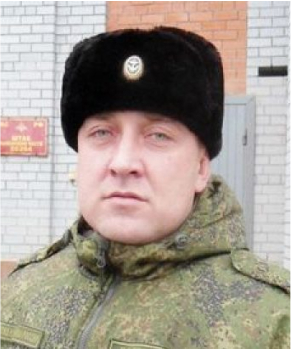
Colonel Aleksandr Kartavkin. Photo: InformNapalm
Now Aleksandr Kartavkin is the commander of the 727th separate battalion of marines of Caspian Fleet of the Russian Federation.
In 2014, Aleksei Nikiforov has been deputy commander of the 501st battalion of marines in Kerch. He disclosed how representatives of the Russian Caspian Fleet replaced marines of the Russian Black Sea Fleet during Russian occupation:
«Battalion from Kaspijsk in Dagestan came and replaced marines from Temruk. They came on armoured vehicles and conducted so-called rotation».
Nikoforov recalls that transit hub has been set up near the ferry. Men looked like Russian troops:
«Cossacks set up their camp near military unit. There were men, around 200 men, near the ferry. They were looking for the ferry. I saw good men, they looked like soldiers and spoke like military – only «yes» or «no». When we introduced ourselves as marines, they answered that they were Cossacks and they were waiting for their people».

Aleksei Nikiforov, Deputy Commander of the 501st battalion of marines (2014, Kerch), Photo: investigator.org.ua
As heads of Kuban and Don Cossack Troops reported, Ukrainian border guards tried to slow down the flow of Russian Cossacks into Crimea at the beginning. They stopped many Cossacks, though, they dressed as civilians. The work of the ferry has been temporarily stopped on the day of the Russian seizure of Verkhovna Rada and government of Crimea (the 27th of February, 2014). Then, the work has been resumed and additional ferries were launched. They carried military vehicles and people with weapons.
«I think that the majority of military vehicles have been brought in by the railway ferry at the beginning. The railway ferry has been built by Russian oligarch Annenkov. The enterprise in Kerch has been headed by Khodko (Sergii Khodko, in 2014 – director of «TIS-Crimea – ed.). he was proud that he has participated in historical events.
Railway ferry was large to carry cars, trucks, armoured vehicles, soldiers. They brought vehicles and troops day and night. They carried multiple rocket launchers. So, they brought it in before so-called «referendum», as says Olena Lysenko.
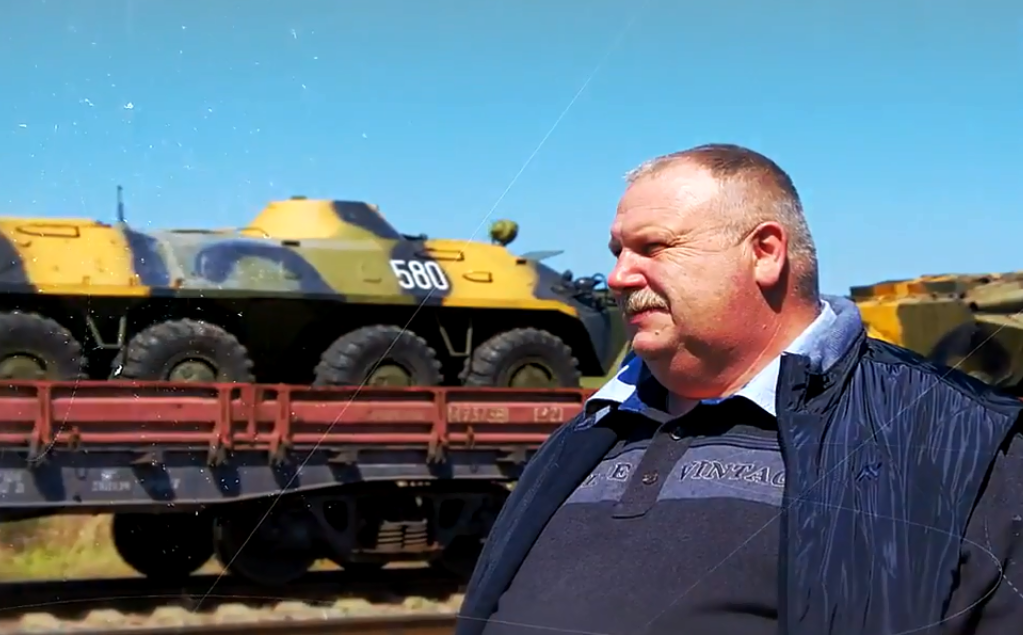
Director of company «TIC-Crimea» Sergii Khodko in front of Russian armored vehicles. Photo: kerch.net
The Center of Journalist Investigations covered the role of Kerch ferry in the Russian occupation of Crimea in its investigation «Ferry man of occupation».
What Russian Cossacks did in Crimea? How many Cossacks were brought in? Who commanded them and what tasks did they perform?
Heads of Cossacks did not hide from video cameras. Armed Cossacks took a lot of pictures in Crimea, near Ukrainian military units, blocked by them. As Crimean separatists, Russian participants of the Russian aggression against Ukraine like to tell about their role in «Russian Spring» in Crimea.

Kuban Cossacks in Crimea. Photo: Аргументы и Факты [Russian media «Arguments and facts»]
In accordance with Cossack information analytical center, the following Russian Cossacks participated in the Russian occupation of Crimea: Cossacks from Orenburg Cossack District, Tersk, Siberian, Astrakhan, Mosow as well as Kuban and Don Cossacks.
Former Governor of Krasnodarsky krai and former Russian Minister of Agriculture Aleksandr Tkachov says that Kuban Cossaks sent one thousand people to Crimea: «Kuban Cossacks were the first Russian Cossacks who came as volunteers to Crimea».
As field head of Cossacks Djakonov reported, there were fewer Don Cossacks than Kuban ones. As he explained it, the head of Kuban Cossacks made a decision to participate in Crimean campaign immediately; he did not wait for the official position of Moscow authorities and came to Crimea.
Cossacks were carried by buses from Kerch to other Crimean cities. Who made a decision about how many Cossacks, where and with what tasks should go? We have precise answer to this question. As field head of Cossacks Djakonov said, he went from Kerch to Sevastopol, to the Headquarters of the Russian Black Sea Fleet:
«I came to the Commander of the Black Sea Fleet to the place where the Head of the General Staff of Southern Military District was later stationed. I was given precise orders and tasks. I will not disclose fully those orders. Cossacks were stationed. One of the tasks has been to increase number of Don Cossacks to 600 people. The first group has been around 100 people. The task has been accomplished. Besides that, we were able to unite local Cossacks (Crimean Cossacks, Tersk, Don and Kuban) under the umbrella of Baklaniv Cossack Crimean regiment».
Upon the order, Kuban Cossacks were stationed in checkpoints at the entrance to Crimea. Those checkpoints were set up by Sevastopol special police unit «Berkut» on February 26, 2014. Russian Cossacks from Taman peninsula, headed by Ivan Bezugly, were stationed near Turkish wall and Perekop. Russian Cossacks fro Ekaterinodar were stationed in tents on Chongar.

Ivan Bezugly, head of Russian Cossacks from Taman peninsula, at the checkpoint near Armiansk. Photo: rusaggression.gov.ua
Viktor Svetlichny, the head of Ekaterinodar branch of Kuban Cossack Troops, reported that several thousands Russian Cossacks came to Crimea and «maintained public order in Simferopol, Sevastopol and Kerch»:
«Armed Cossacks did their service with the aim to stop radical forces from Ukraine. We guarded bus and railway stations as well as administrative buildings where decisions were made about referendum. Together with «Berkut», we guarded checkpoints».
Mykola Doluda, Vice Governor of Krasnodarsky krai and head of Kuban Cossack Troops, came to Crimea and stayed there until Russian annexation of Crimea. He directly managed Kuban Cossacks.
«Cossacks passed an exam this year as they successfully performed state tasks. Cossacks stayed at the frontline during three weeks before the referendum», as told Doluda.
Cossack head Svetlichny reported that Cossacks and policemen from «Berkut» removed a lot of weapons from «extremists» who came to Crimea to make subversive acts and stop referendum. However, we were not able to find any video or photo evidence supporting Svetlichny’s statement. But we found evidence confirming participation of Kuban Cossack in a number of crimes.

Oleksandra Ryasantseva. Photo: investigator.org.ua
Russian media «Spetsnaz Rosii» described the abduction of civic activists of «Avtomaidan» and journalists Kateryna Butko, Oleksandra Ryasantseva, Olena Maksymenko, photographers Oles Kromplyas and Yevhen Rakhno on March 9, 2014.
«They were not ordinary provocateurs. They had to coordinate activity of extremists to thwart referendum on Crimean peninsula. Propagandist materials of extremist character, large sums of money in UAH and USD, prepared to pay provocateurs and bribe public officials, communication means and workbook with contacts and call signs were confiscated from them», as writes «Spetsnaz Rosii».
Activist of «Avtomaidan» Oleksandra Ryasantseva recalls:
«They beat knees of Katya Butko by buttstock. They put us into «Kamaz» of the Russian Navy and then took into underground of the building of road police. When we entered, we saw mattresses in blood. They kneeled us down near the wall – me, Katya and other three people. They threatened and said that they would shoot us. We put us face down to the ground and shot from the gun into the ground. They tortured and humiliated us».
Oleksandra Ryasantseva recognized those who abducted and tortured them when she watched news video on Russian «First» TV channel.
A man in green balaclava threatened Oleksandra to cut her hand and Kateryna Butko – to cut her ear. A woman in white dress humiliated girls whereas member of «Berkut» Oleksandr in black beat them by legs. Cossacks shot from guns above their heads.
Cossack positions or camps were stationed near each Ukrainian military unit. Russian troops blocked perimeters and movement of Ukrainian military vehicles whereas Cossacks and members of «self-defense» served as human shields. Un-armed Ukrainian soldiers tried to get rid of them by sticks or stones. Ukrainian marines did it in Feodosia.
Vadim Ilovchenko, head of Russian Tersk Cossack Troops in Crimea, told that some Cossacks were directly subordinated to Igor Strelkov as commander of Crimean «self-defense». Ilovchenko’s Cossacks seized Information press center in Simferopol.
Ilovchenko said that he met Russian terrorist Igor Girkin at the beginning of the Russian occupation of Crimea:
«Igor Ivanovich told me that there would be a number of special operations. Active citizens were needed for these operations. He asked me to invite Cossacks. We were given weapons. Aksyonov gave us the text of our oath. We were called the first company of special purpose battalion, under the name of «Crimea». I have been the commander of the first company. Well known Bezler Igor Nikolayovich has been the commander of the second company».
Vadim Ilovchenko participated in the seizure of Ukrainian military units.
In 2014, Vladyslav Seleznyov has been the head of Crimean media center of the Ministry of Defense of Ukraine. He told how Russian officers commanded Cossacks and «self-defendants» during assaults of Ukrainian military units.
«As the officer of media center, I came to the territory of Ukrainian military unit «Avtobat» 40 minutes after its seizure by Crimean «self-defense». I saw how members of «self-defense» were directed by officers of the Russian Armed Forces. How did I find it out? Epaulettes of Russian officers were covered by transparent cloths…»

Vladyslav Seleznyov. Photo from personal archive of Vladyslav Seleznyov
After Russian annexation of Crimea, Vadim Ilovchenko together with Strelkov and Bezler participated in the Russian occupation of Eastern Ukraine. He has been appointed as the «commandant» of occupied Kramatorsk.
There were a number of «Crimean Cossacks» who fought against Ukrainians in Donbas.
Sergii Yurchenko fought in Luhansk region and regularly came back to his native Bakhchysaray in Crimea. In April 2014, he has been arrested by the State Security Service of Ukraine when he crossed administrative border of Crimea. Under the suspicion of the state treason, he has been held in prison in Zaporizhzhia. Ukrainian authorities exchanged him and «people’s governor of Donetsk» Gubaryov for personnel of Ukrainian special purpose unit «Alpha», seized by pro-Russian separatists in Kramatorsk.
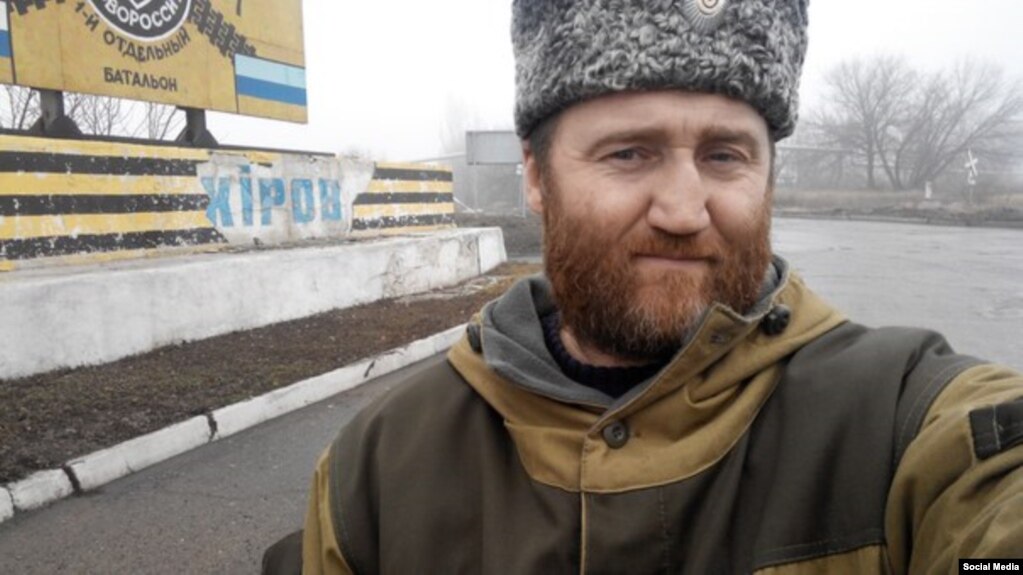
Sergii Yurchenko in Donbas. Photo: account of Sergii Yurchenko in Russian social media VKontakte
While «Crimean Cossacks» fight in Donbas, Russian Cossacks come to Crimea. It is conscious policy of the Russian government to replace local Ukrainian people with newcomers from «mainland Russia». This policy covers even people, loyal to Russian occupation authorities.
In autumn 2015, Russian occupants united various Crimean Cossack organizations under one organization – Crimean District Cossack Association. Russian «Cossack General» Vladimir Mironov has been appointed as its head.
In November 2018, district Cossack organizations of Sevastopol and Crimea were merged into Black Sea Cossack Troops. Number of registered Cossacks – 5 thousand people. The head of this organization is Anton Sirotkin, friend of «Head of Crimea» Aksyonov. His deputy head is Dmitrii Voronin, supervising Cossacks in Aksyonov’s government. It was reported that he opened 10 «Cossack classes» in Crimean schools.
Militarization of occupied Crimea and consciousness of its residents is under way…

Cadet of Cossack class, Simferopol. Photo: Diana Belova / gymnasium10simf.ru
The role of Cossack units in Crimea has not significantly changed after the Russian occupation of Crimea. They have been «schutzmanns», auxiliary police of Putin’s regime on occupied territory where many people oppose Russian annexation.
After Russian full scale invasion into Ukraine, some Crimean Cossacks actively participated in the war against Ukraine. In 2022, Cossack battalion «Tavrida» has been launched in Crimea. He has been commanded by Anton Sirotkin, the head of Black Sea Cossack Troops. The battalion has been promoted as an «assault battalion» but Cossacks have mostly spent their time in dugouts in occupied Zaporizhzhia region. The Center of Journalist Investigations covered the battalion «Tavrida» in its material «Aksyonov’s battalion «Tavrida» in the war against Ukraine».

Soldiers of Cossack battalion «Tavrida». Screenshot of Russian propagandist video
Consequently, the battalion has been subordinated to the Russian Guard. As Oleg Gasanov, commander of company «Sevastopol» of battalion «Tavrida» reported, in September 2022, the battalion has been taken back from the frontline to Crimea. Then, in August 2023, Sirotkin ordered to organize battalion «Tavrida» from Cossacks of Black Sea Cossack Troops – as part of the 116th separate special purpose brigade of the National Guard of the Russian Federation». Russian Colonel A.M.Afromeev has been appointed as the commander of the battalion whereas sergeant V.A.Takmakov – as the head of its headquarters.
As Ukrainian military expert Kostyantyn Mashovets noted in his telegram channel, «the 116th brigade looks like strengthened motor rifle unit… It has been stationed in occupied part of Donetsk region. Later, three battalions of the brigade have been stationed in Belgorod region of the Russian Federation».
That is to say, «Head of Crimea» Aksyonov turned his Cossacks into ordinary Russian policemen…




